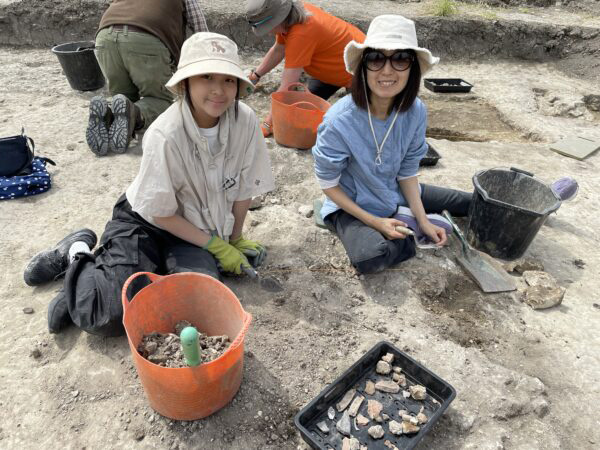Volunteers join archaeologists in Wittenham Wood Camp excavation

[Image of people at the archaeological dig site, Credit to ChaeOne Lee]
Last June, archaeologists and groups of amateur excavators headed to Oxfordshire to investigate an ancient Roman villa.
On June 6th of 2024, professional archaeologists and volunteers eager to excavate ancient ruins gathered to explore Wittenham Wood Camp in Oxfordshire, England.
The expedition members spent over two weeks digging the remains of an old Roman villa uncovering artifacts such as Roman pottery, bones, and various utensils.
The team revisited Wittenham Wood Camp, a site in Oxfordshire, England, once excavated by the same archaeologists in 2018.
In 2018, archaeologists investigated a nearby site that was home to the Iron Age.
At the time, they discovered a pet animal, suspected to be a sausage dog, and a high-tech blacksmith's shop.
Both expeditions involved unskilled amateurs who joined because of their interest in historical sites.
These volunteers were taught how to dig up sites carefully using tools like trowels and pickaxes.
While some members used more traditional tools such as trowels, some experts used electrical devices, including drones and detectors, to find places with valuable artifacts.
However, despite the presence of any special equipment, archaeologists state that most digging processes start with an examination of the ground surfaces.
Archaeologists begin by detecting a practical area through which ditches can pass.
Then, they scrape the surface area of that sector to see if there are signs of water flow by contrasting the color of the dirt.
Researchers begin by scraping off the surface first because the heat from the sun has dried the land, making it invisible to see wet signs.
Once they find a ditch passage, people use lines to divide and make notes of the section.
When all the preparation is done, it is time to dig out the dirt to find artifacts and carefully ditch remains.
Archaeologists look for signs of ditches because the ancient civilians they are researching are adapted to littering their wastes into ditches.
Therefore, these ditches are a key focus because they provide many artifacts, including pottery, bones, and rare metal materials.
During the 2024 excavation of Wittenham Wood Camp, the research team found countless pottery pieces in many villa sections.
However, most pieces were found in the wall area, which is quite an extraordinary place to find pottery segments.
The researchers also uncovered a vast, well-preserved bone, yet they did not determine which animal’s bone it was.
As the researchers analyzed the artifacts from the Roman villa, they concluded that the people living there were British Romanians.
The villa's style is a traditional British and Roman style.
Artifacts found, such as pottery with the names of Roman makers, the way most of the artifacts were found, and the structure of the villa match farming necessities.
As archaeologists concluded, the ancient villa is guessed to have been made by a Roman-British group.
In summary, as a modern observer examining valuable artifacts created nearly 1800 years ago and the artifacts found in the layer underneath the Roman villas from the Iron ages, these preserved artifacts all showed how time buries and preserves history in a natural way that can be used for modern researchers and volunteers to analyze and share to the public influencing the field of archaeology.

- ChaeOne Lee / Grade 8
- St Paul Preparatory Seoul

![THE HERALD STUDENT REPORTERS [US]](/assets/images/logo_student_us.png)
![THE HERALD STUDENT REPORTERS [Canada]](/assets/images/logo_student_ca.png)
